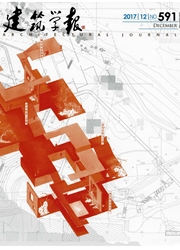

 中文摘要:
中文摘要:
基于中国住居文化的原型——巢居、穴居、庐居进行了建筑材料、结构、内部空间与陈设的梳理和再思考;在中国传统轻型建筑(木构)和重型建筑(砖石)之间,以及中西木构比较的基础之上,阐释了中国传统建筑对材料物性的不同理解和结构处理上的不同智慧;从建筑原型的生发环境和建筑体系效能等方面比较传统轻型建筑和现代轻型建筑的异同,探寻其在自然和人文方面的延续和观照。
 英文摘要:
英文摘要:
This paper reviews and rethinks material and form, and structure and construction regarding three traditional Chinese housing archetypes - nest, cave and tent. it compares Chinese traditional timber architecture (lightweight) with masonry architecture {heavyweight), and Chinese timber structure with the Western counterparts, demonstrating the unique understanding of materiality in traditional Chinese architecture and the different wisdom of structural arrangement. It also compares modern lightweight structures using NEWBUD composite building system with those using traditional techniques according to the settings that resulted in archetypes and efficiency in search of natural and humanistic concern and continuation
 同期刊论文项目
同期刊论文项目
 同项目期刊论文
同项目期刊论文
 期刊信息
期刊信息
